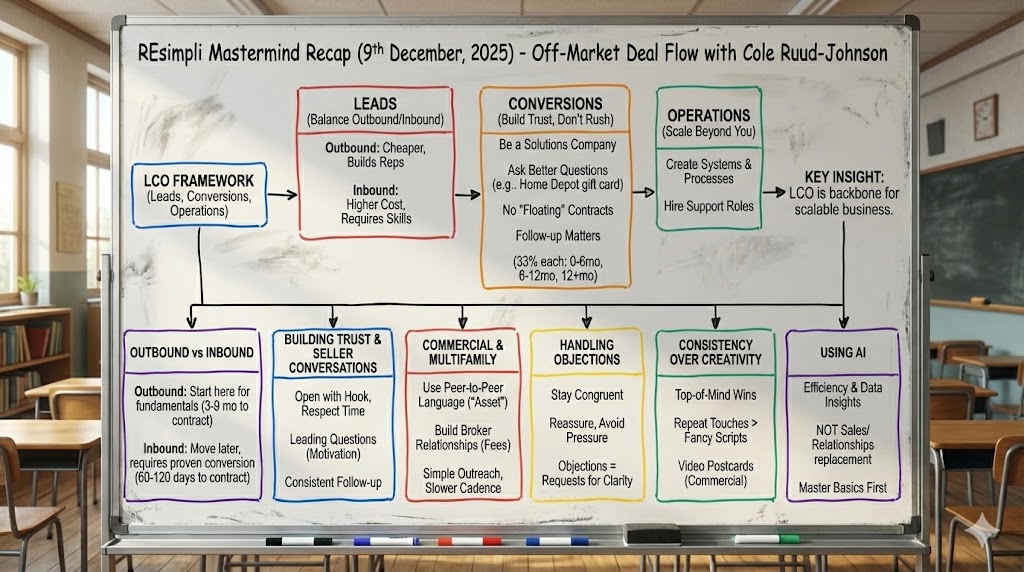In today’s market, traditional financing does not work for every investor or every seller. Tighter lending guidelines, rising rates, and unique seller circumstances mean that more and more investors are turning to creative financing strategies to get deals done.
Creative financing allows you to control properties with little to no cash, work around lender restrictions, and offer sellers better solutions than a typical cash offer. This guide breaks down the most common creative finance strategies in real estate, when to use them, and how to track them in REsimpli.
What Is Creative Financing
Creative financing in real estate refers to using non-traditional methods to acquire or control a property without relying on conventional mortgages from banks or lenders. These strategies often involve negotiation with the seller directly and can open up deal opportunities that others walk away from.
Why Use Creative Financing
- Avoid needing large down payments or bank approval
- Help sellers in tough financial situations
- Structure win-win deals that fit both sides
- Create cash flow from properties you do not own outright
- Build your portfolio faster with less capital
Most Common Creative Finance Strategies
1. Subject To
You take over the existing mortgage payments, but the loan stays in the seller’s name. You get the deed and full control of the property.
Best for: Preforeclosures, low equity situations, sellers behind on payments
Use REsimpli to:
- Track seller conversations
- Store loan documents
- Automate monthly follow-ups
2. Seller Financing
The seller becomes the lender. You agree to a purchase price, a down payment, and monthly payments over time. No bank is involved.
Best for: Free and clear properties or sellers wanting passive income
Use REsimpli to:
- Track payment schedules
- Create reminders for balloon payments or annual terms
- Attach contract documents to the lead record
3. Lease Option
You lease the property with the right to buy it later. You control it today and secure a purchase option for the future.
Best for: Sellers who want income now but are open to selling later
Use REsimpli to:
- Track lease dates and option expiration
- Schedule rent payment reminders
- Track tenant buyer communication
4. Wraparound Mortgage
You buy a property subject to the existing loan and give the seller a second note for the difference. You pay the seller, and they pay their lender.
Best for: Deals where the seller wants a spread over their current loan
Use REsimpli to:
- Track two notes under one lead
- Monitor payment flows
- Automate drip campaigns to tenant buyers
5. Novation Agreement
Instead of assigning a contract, you partner with the seller to renovate and sell the property. Once sold, profits are split.
Best for: Properties in good locations but needing repair, sellers open to higher returns
Use REsimpli to:
- Manage contractor milestones and notes
- Track project expenses
- Set task reminders for listing and sales
Seller Financing vs Subject To
These are two of the most popular creative options. Here is how they compare:
| Feature | Seller Financing | Subject To |
| Loan in Seller’s Name | No | Yes |
| Buyer Gets Deed | Yes | Yes |
| Who Gets Paid | Seller directly | Lender to buyer |
| Common Scenario | Free and clear house | House with existing mortgage |
| Risks to Seller | Missed payments | Missed payments affecting credit |
| Risks to Buyer | Foreclosure if the seller fails to pay | Due on sale clause (rarely enforced) |
How to Find Creative Finance Deals
- Look for motivated sellers in distress
- Target properties with little equity or preforeclosure status
- Ask better questions during discovery
- Use lead tags in REsimpli like creative, seller open, or behind on payments
- Follow up consistently, since creative deals take more touches
How to Track and Manage Creative Deals in REsimpli
Creative deals can have more moving parts. REsimpli helps you stay on track with:
- Custom lead tags for each deal type
- Multiple pipeline stages, such as seller financing offered or lease option active
- Task reminders for payment dates, option expirations, or follow-up calls
- Document storage for each agreement or loan
- Automated communication sequences depending on status
Conclusion
Creative financing is not a niche tactic. It is a core strategy for investors looking to grow faster, solve harder problems, and close more win-win deals.
Whether you are structuring a subject to deal with, building a lease option funnel, or offering seller financing terms, REsimpli gives you the tools to track it all, communicate clearly, and close with confidence.
FAQS
Creative financing refers to alternative deal structures like Subject To, seller financing, or lease options that don’t rely on traditional mortgages.
Use it when the seller is flexible, the property has little equity, or banks won’t finance the deal. It's ideal in preforeclosures, probate, or with tired landlords.
Yes. As long as it's disclosed and documented properly, creative financing is a legal and widely used investment strategy.
REsimpli allows you to tag, organize, and automate every step of creative deals—from contract storage to payment tracking to seller communication.
Seller financing is often easiest to start with. It avoids banks and works well with free-and-clear properties.

